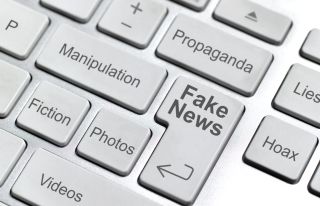Fake news is nothing new. Examples of propaganda, sensationalism, and disinformation are known from as early as the 13th century B.C. But in the age of the internet, fake news spreads in a flash and its influence is unparalleled.
An informed citizenry is essential to a functioning democracy. Use these free fact-checking sites to help your students learn how to distinguish reliable information from false information and think critically about what they read online or in print.
Free Fact-Checking Sites for Students and Teachers
Politifact
The go-to site for verifying political claims, Politifact covers a wide range of issues, people, and promises, and includes 14 state-specific editions. Be sure to check out the Truth-O-Meter, which rates claims on a sliding scale from “true” to “pants on fire.” Factual and enjoyable!
Google Fact Check Explorer
A fact-check search engine, Google Fact Check Explorer is a clever way to quickly check the latest rumors circulating on social media and websites about any topic or person. Enter a name, place, event, or any text and immediately a list of fact-checked claims appears. The claim preview displays the claim, date, and a link to the evaluation.
FactCheck.org
From the Annenberg Public Policy Center, Factcheck.org is one of the oldest and most respected fact-checking sites. Click on FactCheck posts to read the latest news fact-checked. Or select a topic, such as Donald Trump, President Biden, or coronavirus to explore stories that may or may not be 100% true. Each article includes a quick summary, full report, and references.
Fake Or Real? How To Self-Check The News And Get The Facts
Fact-checking sites are a useful tool, but students can also learn to apply the principles of fact checking on their own. Students will learn how to assess and analyze the credibility of any online article or website. Ideal as a preliminary to undertaking a research project.
Snopes
Snopes is flat-out fun, featuring wacky articles about the 8-foot tall woman, cannibalism, and Halloween candy. But underneath the sometimes-amusing subject matter are real fact checkers who investigate the claims, uncover evidence, and present conclusions. And it’s not only outlandish stories, but also any news-worthy topic, including politics, culture and global events. Snopes calls itself the oldest and largest fact-checking site online. Is it true? I haven’t fact-checked that claim, but I know your students will love Snopes.
Open Secrets
Open Secrets isn’t the usual fact-checking site. Rather, it’s dedicated to tracking, documenting, and revealing the sources of money in American politics and the effect on elections and policy. The site’s research tools include national and local donor lookup as well as selected datasets about campaigns and donors. Great for PBL and advanced students.
BBC New Reality Check
The highly respected British Broadcasting Corporation (BBC) takes a wide-ranging look at trends, rumors, global events, and disputed or controversial news stories. Students can dive into the careful analysis and draw their own conclusions.
Factitious
Super fun game in which users read short articles, look at the article source, and decide if it’s fake or real news.
Quote Investigator
Did they really say it? Not the usual quotation site, Quote Investigator examines sayings attributed to a wide variety of famous persons, from Mark Twain to Maya Angelou. Go beyond internet memes to discover the truth.
Checkology
An impressively comprehensive approach to fact checking, Checkology is really a media literacy curriculum. Sign up for a free educator account and start browsing the standards-aligned lessons on misinformation, conspiratorial thinking, interpreting data, and more. The Check Center helps students evaluate an image, screenshot, or URL with questions to guide their inquiry.
AllSides
Allsides has a unique approach to fact checking, looking at each trending topic from the perspective of left, right, and center media. Often, the key facts are not in dispute; rather, it’s the subtle (or obvious) bias applied to the same set of facts that’s highlighted by AllSides. A good tool to help kids start to understand about media bias and how one’s viewpoint affects the interpretation of events.

